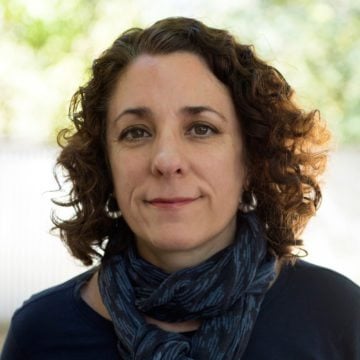On the Fence
A new documentary chronicles the border wall boondoggle

If it weren’t for 9-11, we wouldn’t have a 670-mile border fence boondoggle along our southern border, was the take home point from filmmakers Rory Kennedy and Keven McAlester Thursday evening.
A few hundred people filled the auditorium last night at the LBJ Library in Austin to watch the 36-minute documentary called “The Fence.” The filmmakers examine how the $3.7 billion fence (and rising) has resulted in massive taxpayer waste, environmental ruin and spurred an increase in immigrant deaths.
If you know little about what South Texans call the “border wall” and what a travesty it is, this documentary is a good place to start for your edification. The filmmakers try to distill the complex issues of immigration, poverty, bad public policy and environmental degradation down into an often darkly humorous look at what got the United States into this fence-building mess. And mostly, they do a great job of it, while not depressing the heck out of us.
As someone who feels passionate about the border region and has probably depressed the heck out of many a reader with my stories about the border wall over the years, I can appreciate their lighter touch. No doubt it will attract a wider viewer ship, who probably know very little about the fence, because it will make them chuckle from time to time while they shake their heads in disbelief.
McAlester, producer of the documentary, said they even read the darkly humorous Catch-22 during the filming to try and capture that flavor. “The complete ridiculousness and insane boondoggle is what drew me to the subject,” he told the audience after the screening. “That and working with Rory Kennedy.”
Kennedy, 41, the youngest daughter of Robert F. Kennedy, has made several documentaries in the past two decades including the Emmy award-winning “Ghosts of Abu Ghraib.”
One strong point of the documentary is that it also includes a Mexican perspective in the equation, which has often been lacking in other documentaries on the fence. They interview a “coyote,” in Tijuana who has been crossing people illegally for the past 20 years. In a short exchange, this man shows that the border fence as a deterrent is a joke. “Human beings have more ideas than any device,” he says, pointing out holes that have been dug under the fence and drainage tunnels that are used to cross into San Diego just a few hundred yards away.
Wisely, they don’t dwell on solutions. Trying to tackle our complex immigration and border security issues in a 36-minute documentary would be folly. “There are so many complex issues, we really wanted to stay focused on the fence itself,” Kennedy said. “But we did want to take a look at legislators and policymakers and hold them accountable on both sides of the aisle,” she said.
An overwhelming majority of both Democrats and Republicans in Congress supported the building of the fence. In my view, the documentary doesn’t do enough to expose their lack of congressional oversight, but at the very least more Americans who watch this documentary will realize what a sham the border fence is. “It’s a band-aid on a sucking chest wound,” as one Arizona rancher aptly sums it up in the documentary.
The federal government needs to tackle the complex issue of immigration reform, instead of responding with simple — yet costly fixes like the border fence, said Kennedy. “We aren’t a nation that builds fences or walls.”
If you have cable you should see “The Fence, ” which will air on HBO on September 16. I hope people will tune in. Because in the end, one of the most shocking things about the 670-mile border fence is how little Americans know about it, even though they’ve already paid nearly $4 billion of their own tax money to build it.


